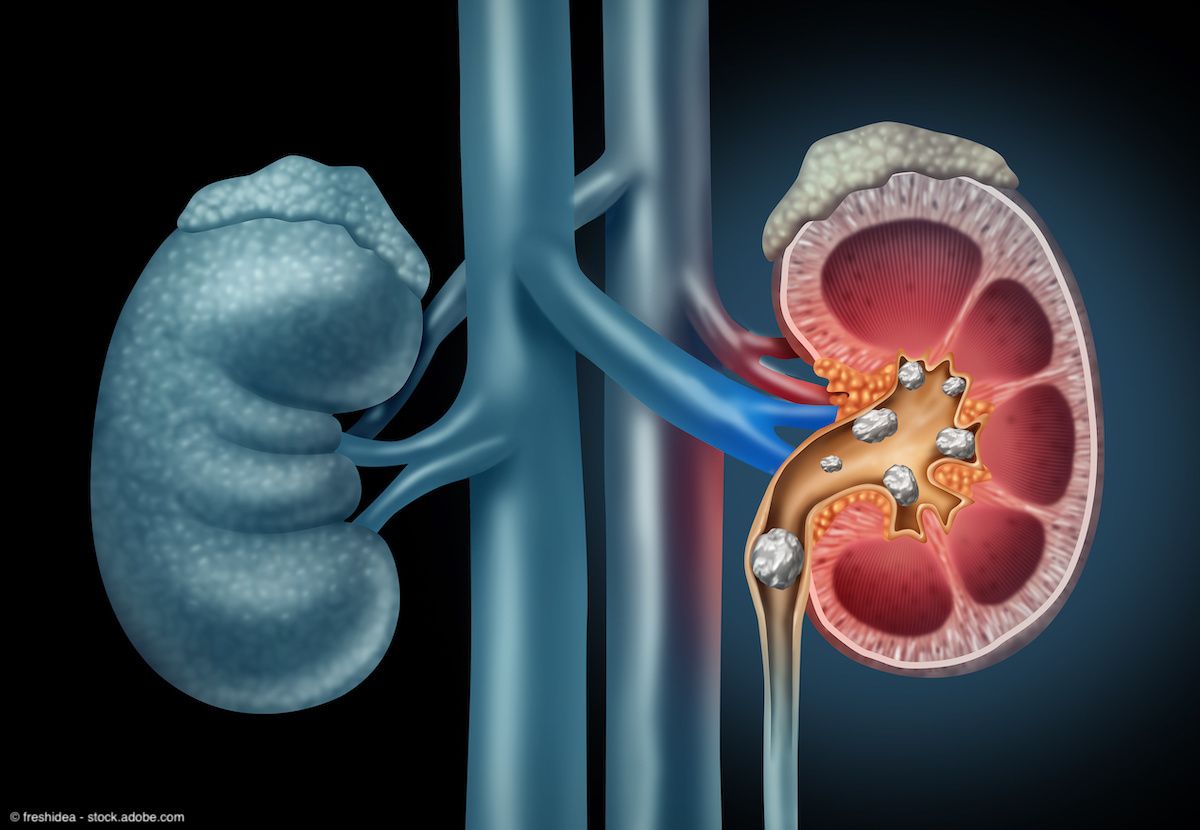News
Article
Urology Times Journal
Study highlights need for improved enrollment, reporting in urolithiasis trials
Author(s):
Key Takeaways
- Hispanic patients are underrepresented in urolithiasis trials, while Black participants are overrepresented, highlighting disparities in trial demographics.
- Only 22% of trials reported race and ethnicity, indicating a need for improved reporting practices to reflect population diversity.
Data showed that Hispanic patients were consistently underrepresented in clinical trials, while Black participants tended to be overrepresented.
A recent study published in Urology Practice found that certain racial and ethnic minority groups are misrepresented in urolithiasis clinical trials compared with the overall urolithiasis population in the United States.1
"Only 25% of urolithiasis trials publish these data and a significant number of those trials publish incomplete or reductive participant information," says Amy M. Reed, MD, Capt, USAF, MF.

For the study, the investigators assessed clinical trials indexed on PubMed from 2000 to 2022. Of the 180 urolithiasis clinical trials performed in the US during that time period, 40 (22%) reported race and ethnicity of participants and 104 (58%) trials reported sex of participants. Given that only 1 in 4 published trials reported race and ethnicity of participants, the authors note that improved reporting practices are needed to better reflect the diversity of the urolithiasis population.
Demographic data obtained from the included studies were then compared to the kidney stone prevalence reported by the National Health and Nutrition and Examination Survey from 2015 to 2018. A representation quotient was calculated to determine the concordance of representation on race/ethnicity and on sex, stratified by geographic location, study type, and funding source.
Overall, data from the study showed that both male and female participants were well represented in clinical trials, with representation quotients of 0.97 and 1.02, respectively.
Regarding race and ethnicity, data showed that Hispanic patients were consistently underrepresented in clinical trials, with a representation quotient of 0.46. Conversely, Black participants tended to be overrepresented, with a representation quotient of 1.84. The representation quotients for Asian American and Pacific Islander patients, White patients, and patient of mixed/other ethnicity was 1.06, 1.04, and 0.34, respectively.
When stratified by geographic location, the most proportional enrollment in clinical trials was seen among studies completed in the Western section and in multi-institutional trials. Trials completed in the South Central and Southeastern Sections tended to underrepresent Hispanic patients and those of mixed/other ethnicity.
Trial enrollment was similar when stratified by study type. When looking at funding source, trial that were industry funded tended to have more diverse enrollment compared with those that were academic-funded.
Co-author Amy M. Reed, MD, Capt, USAF, MF, an endourology and laproscopic surgery fellow at Vanderbilt University Medical Center in Nashville, Tennessee, explained in correspondence with Urology Times®, “We feel our findings further urologic knowledge in 2 major ways. First, we found decreased enrollment of high-risk stone populations. By identifying enrollment trends within urolithiasis trials, we can work on understanding barriers to enrollment and how culture and socioeconomic factors may impact this community. Second, by using final published manuscripts, we highlight areas of improvement for communication of results by investigators and authors. Only 25% of urolithiasis trials publish these data and a significant number of those trials publish incomplete or reductive participant information. Understanding these limitations is important because clinical trial results inform the medical community to draw accurate conclusions and apply generalizable results to clinical practice.”
As such, the authors concluded, “Investigators should prioritize inclusive recruitment and improve reporting practices to accurately reflect the diversity of the urolithiasis population.”1
Reference
1. Reed AM, Hsi RS. Diversity, equity, and inclusion in urolithiasis clinical trials: Representative enrollment by race, ethnicity, and sex. Urol Pract. 2024;11(4):685-691. doi:10.1097/UPJ.0000000000000595

Newsletter
Stay current with the latest urology news and practice-changing insights — sign up now for the essential updates every urologist needs.

























